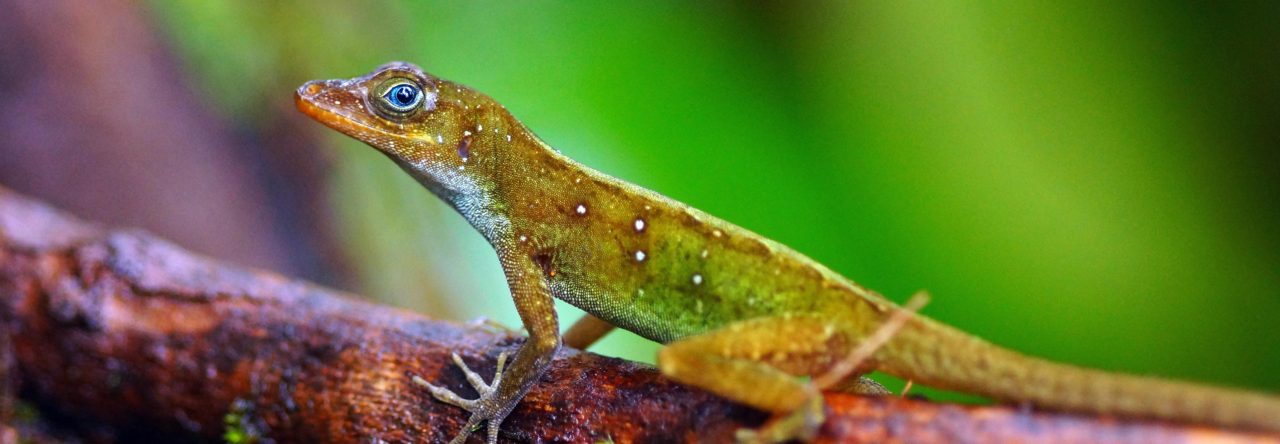Aging theory predicts that organisms will age faster when the probability of survival to old age is low. As a result, males and females of a species may age at distinct rates if they experience different rates of mortality due to environmental factors. Postdoctoral researcher Dr. Aaron Reedy (Auburn University) and colleagues tested this idea by performing a mark-recapture study of introduced Anolis sagrei in the small Island H in Florida, an island that is approximately the size of a baseball field.
The team tracked 6,591 individuals of A. sagrei from hatchling to death through a near-complete sampling of the population four times a year between 2015 and 2019 (!!). The research group measured the body condition of individuals based on the residuals of mass on body length and estimated the rate of aging based on chromosomal telomere length from real-time qPCR.
The results suggest that males have higher mortality and shorter lifespans than females; most males die within two years, while females can live up to three and even four years. The study also found that males suffer a decline in body condition with age that females don’t seem to – Aaron even mentioned that he is often capable of predicting how old a male individual is based on how haggard it looks! Preliminary data suggests no statistical differences in telomere length between males and females, although there seems to be a trend of decreasing telomere length with age in males only.
In conclusion, Dr. Reedy and colleagues found that males have increased mortality and shorter lifespans than females, but it is unclear whether males senesce more rapidly. The next steps of this investigation will include longitudinal studies in both the field and lab to follow how fast single individuals age over their lifetimes.
You can check his poster on Aaron’s website.





















